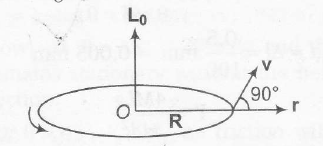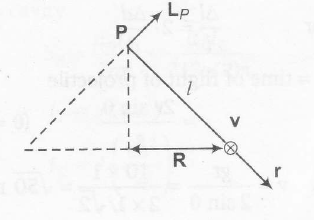Answer:
Option C
Explanation:
Angular momentum of a particle about a
point is given by :
L=r×p=m(r×v)
For L0

|L|=(mvrsinθ)=m(Rω)(R)sin900
=mR2ω= constant
Direction of L0 is always upwards , Therefore , complete L0 is constant , both in magnitude as well as direction
For Lp

|Lp|=(mvrsinθ)
=(m)(Rω)(l)sin900
=(mRlω)
magnitude of Lp will remain constant but direction of Lp keeps on changing